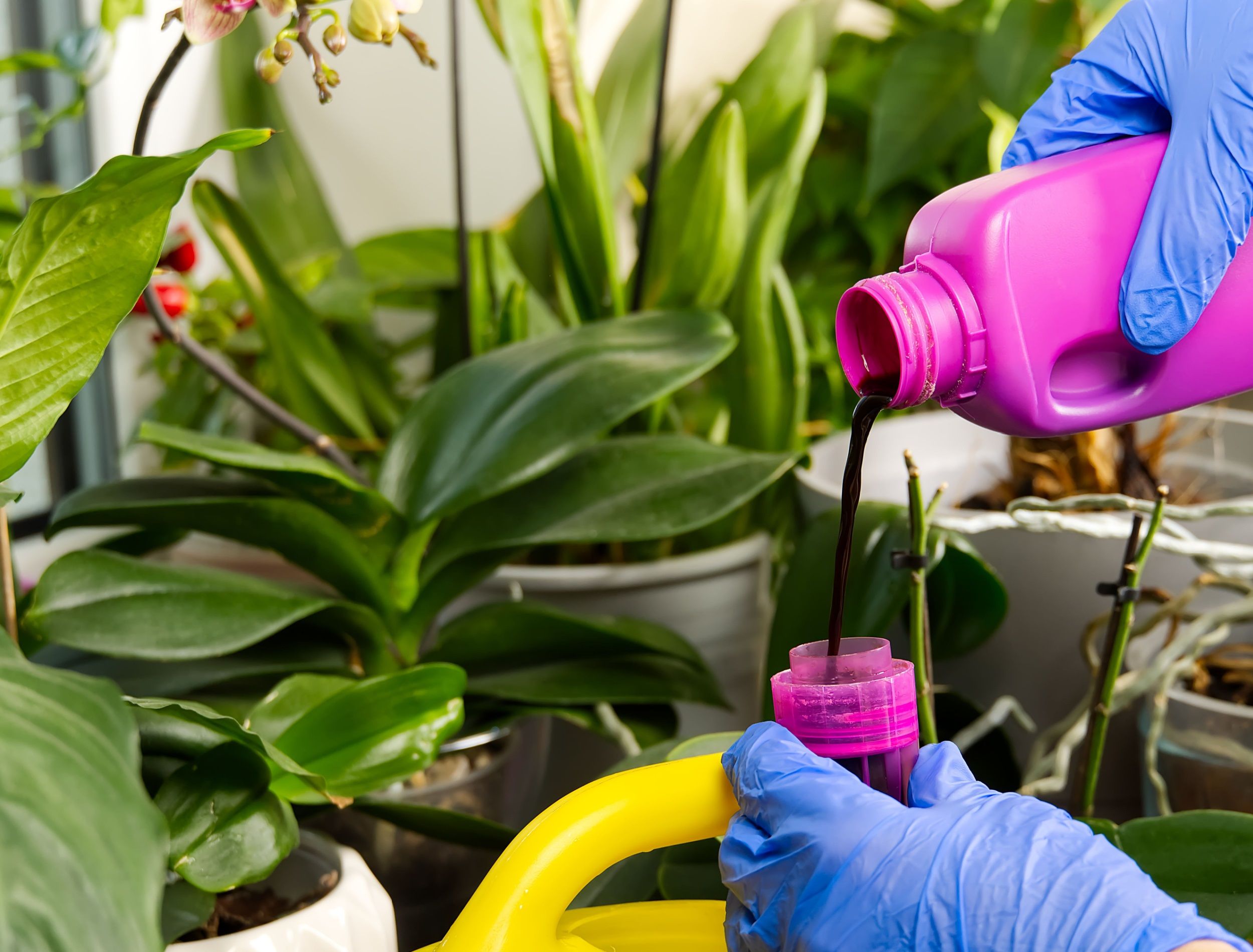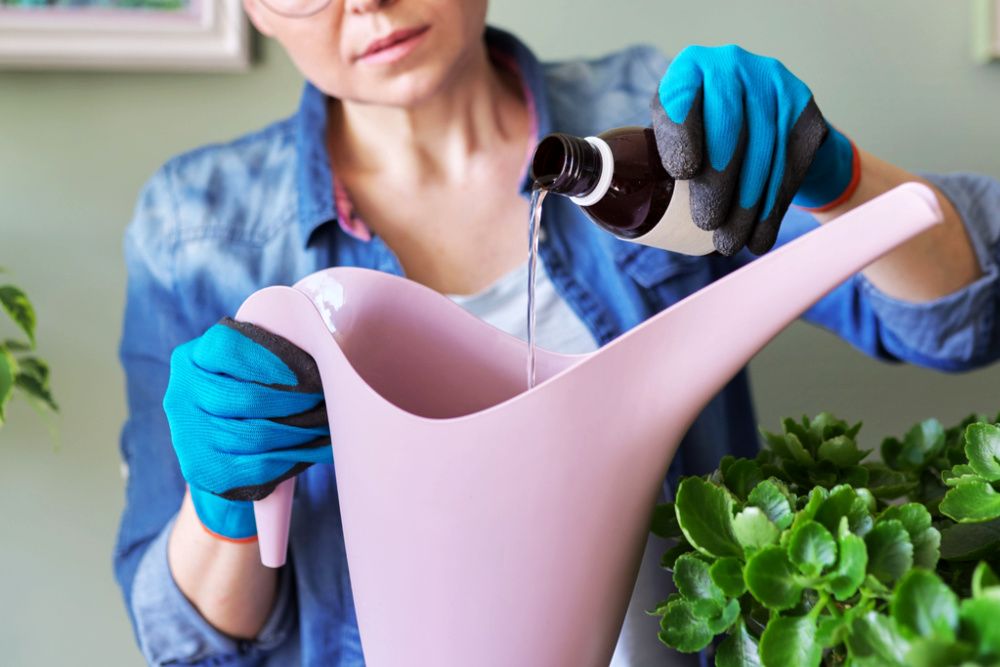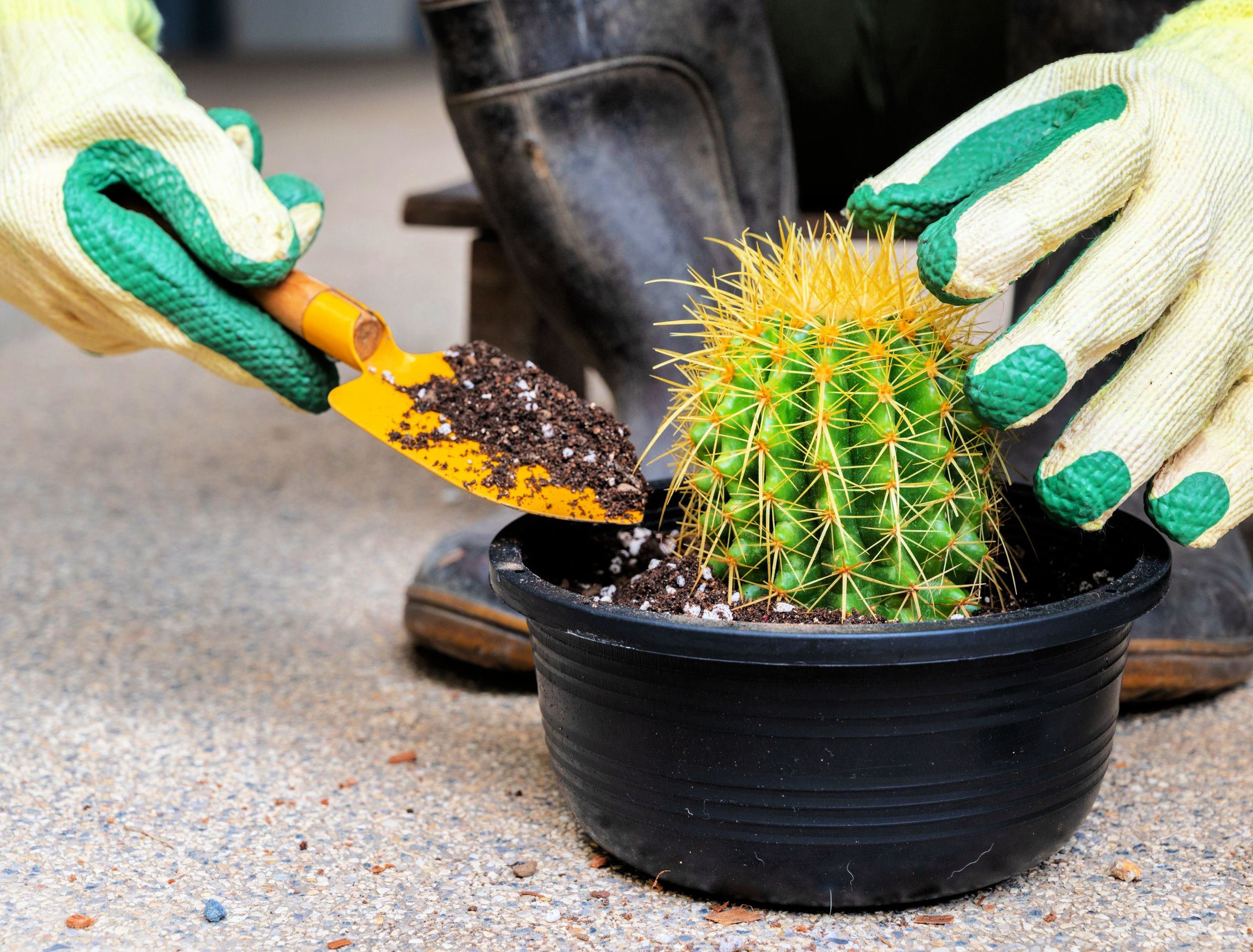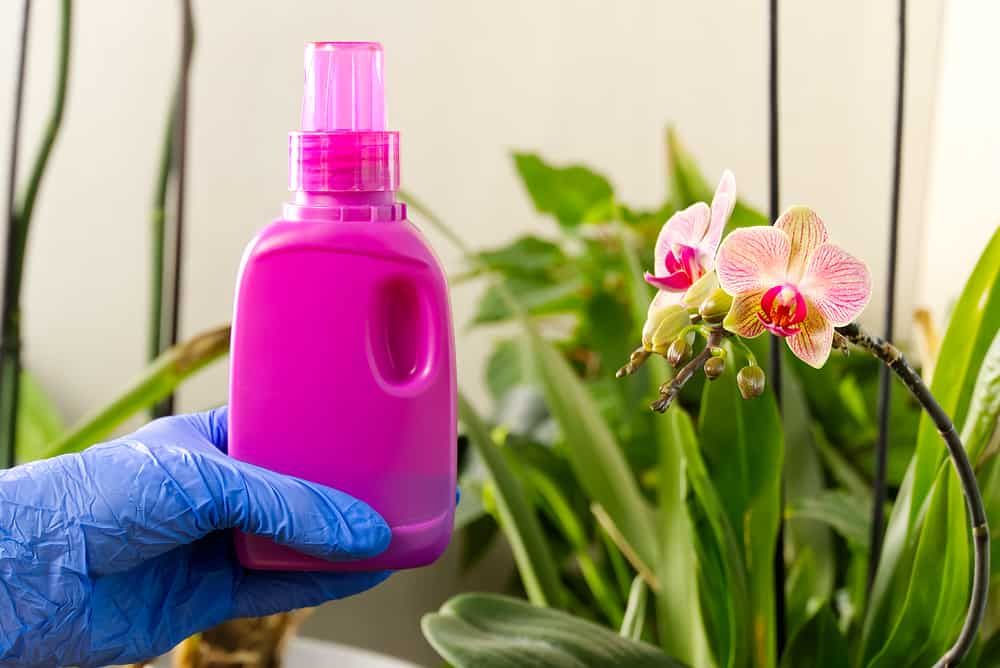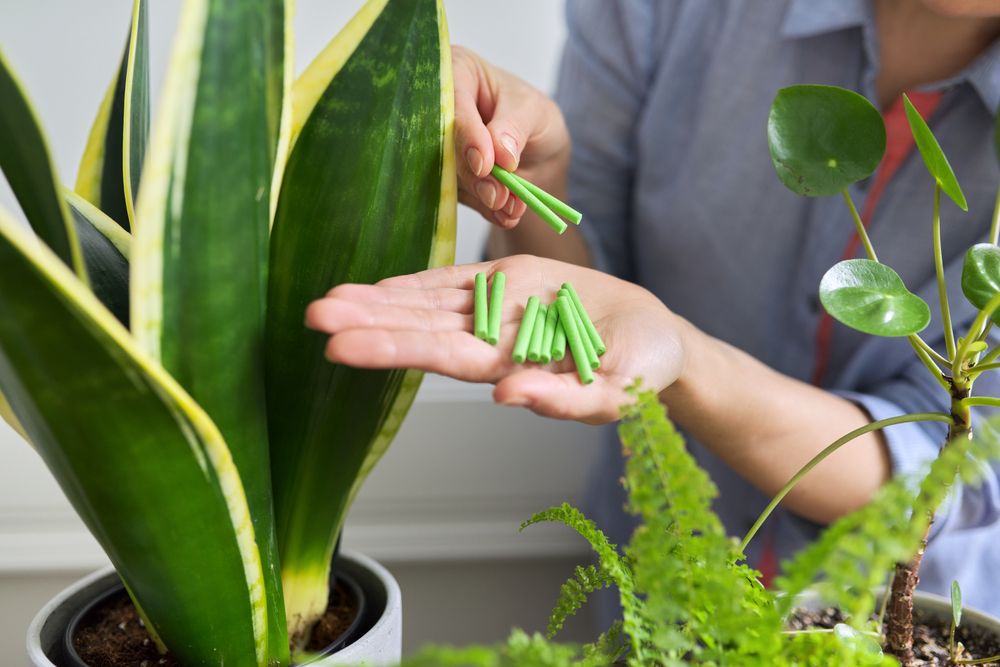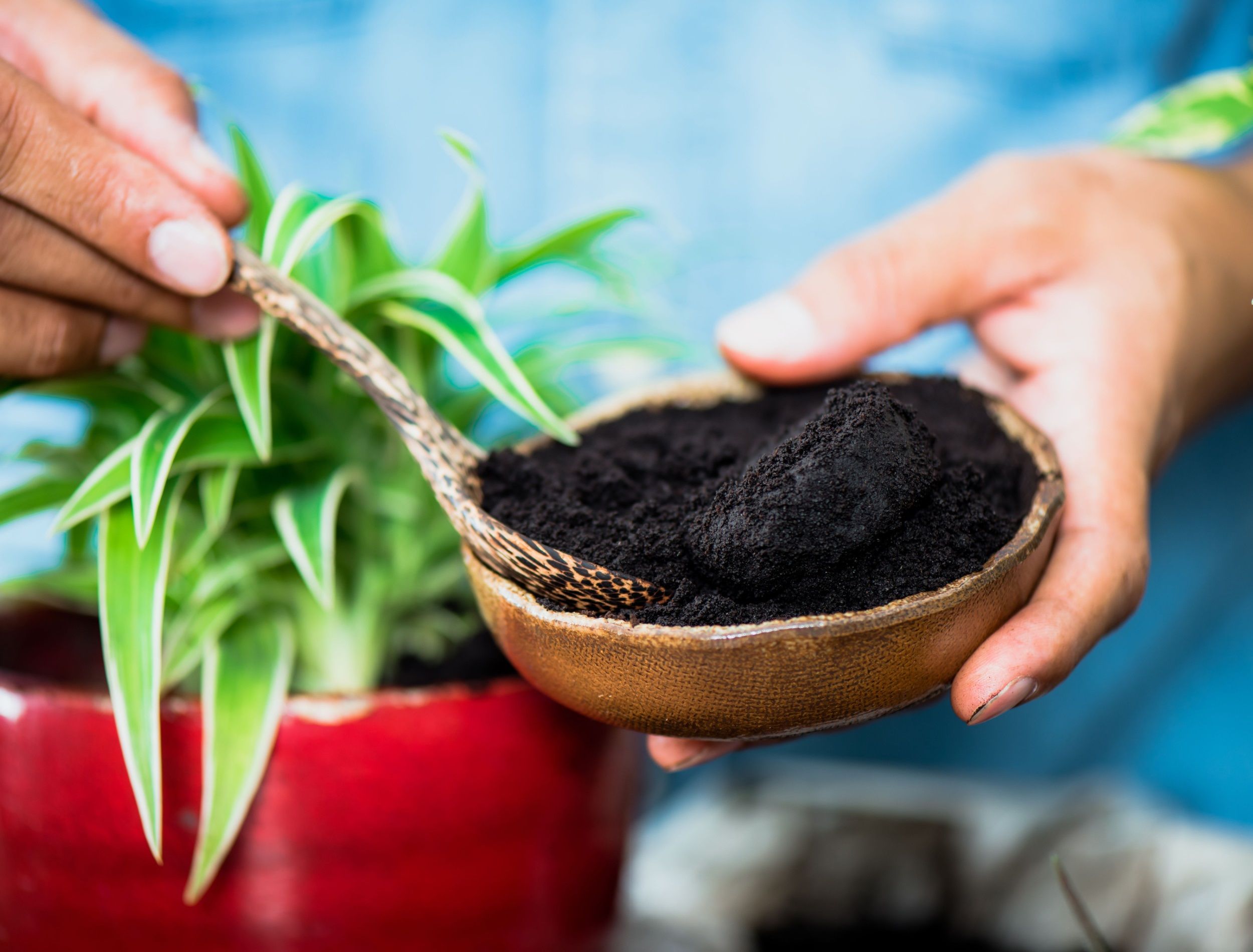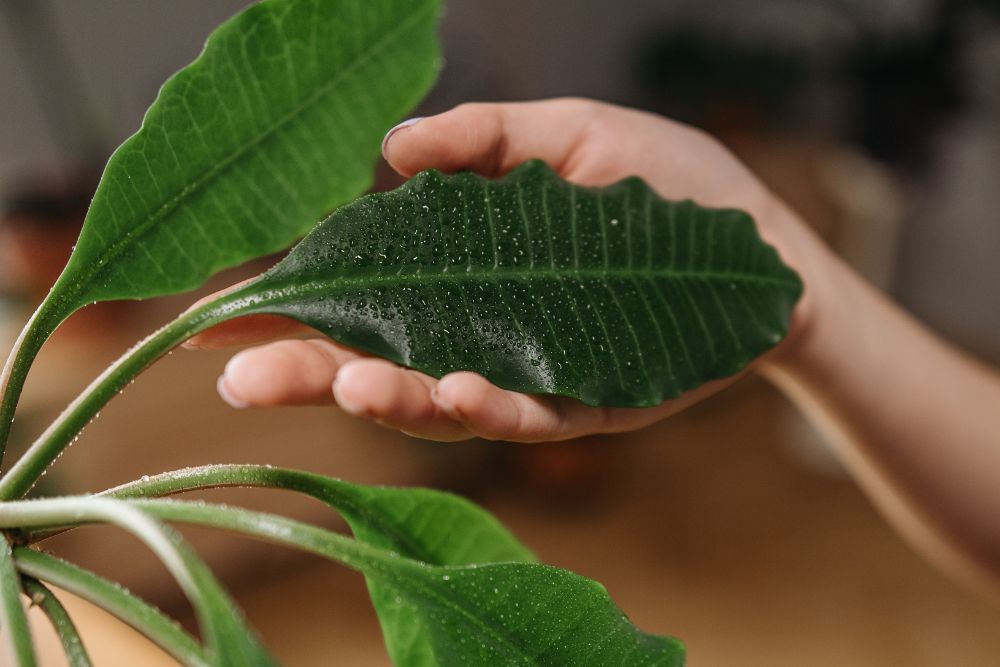Healthy houseplants don't just bring beauty and life inside the home. They can also help purify the air, reduce stress levels, and make a room vibrant and inviting.
Creating an optimal environment for your houseplants is key to ensuring that they look their best! Regardless of whether you're a gardening novice or an experienced green thumb, here are seven tips on how you can start fertilizing your houseplants so that they flourish!
Know Your Plant's Needs
Image credits: VH-studio via Shutterstock
Caring for your indoor plants can be a rewarding experience, but it's essential to understand the individual needs of each species. Some plants are heavy feeders and require more frequent fertilizing, while others don't need much or none at all. Peace lilies, for example, need little fertilizer to stay healthy -- Feeding them every six weeks during the growing season is ample.
Knowing what type of nutrients and care your plants need will also ensure that you keep them in top condition. Consider researching the specific requirements of each plant before you bring them home. This way, you'll have an easier time providing the best possible environment for their growth.
Start Off Lightly
Image credits: Boyloso via Shutterstock
When it comes to fertilizing your plants, you'll want to start off lightly. Applying too much fertilizer can cause damage to the plant. If you overfertilize you risk your plant yellowing, wilting, or root burn.
Begin with a light application and avoid getting fertilizer on the leaves or stems as this could lead to burns. As your plant grows and develops new growth, you can add small amounts of fertilizer accordingly. If there isn't any fresh growth, there isn't need for extra fertilization.
Feed During Growing Season
Image credits: VidEst via Shutterstock
During the growing season, most indoor plants will benefit from bi-weekly to monthly feedings. Between March and September, when light and temperature levels are at their peak, provide your plants with the nutrition they need to flourish. Simply dilute a liquid fertilizer according to package instructions and use it to water your plants once a month for the best results.
When winter arrives, take a break from fertilizing. Reduced light and temperature during this period result in reduced growth, so it's best to skip fertilizing altogether. Don't worry; your plants will perk up again when spring comes around!
But all in all, before you do anything, research the needs of your specific plant!
Avoid Over-Fertilizing
Image credits: Volodymyr Zakharov via Shutterstock
When it comes to fertilizing your plants, there's nothing worse than overdoing it. Too much of a good thing can have dangerous consequences. Over-fertilization is a common gardening mishap and can cause irreversible damage to your plants.
Excess salts in the soil can burn roots, leaving them unable to absorb water or vital nutrients, stunting growth, and ultimately killing the plant. To avoid this, do not over-feed your plants, and always follow the instructions on fertilizers you use. Start small when introducing new fertilizers into the soil and gradually work your way up from there if needed.
Choose the Right Fertilizer
Image credits: VH-studio via Shutterstock
When it comes to keeping your houseplants healthy, choosing the right fertilizer can make all the difference. Depending on the type of plant you have and its needs, there are a few factors you should consider when selecting a fertilizer.
Liquid fertilizers are great for providing quick boosts of nutrients during active growth periods. Granular or tablet fertilizers will help provide steady nutrition throughout the season. For longer-term feeding, slow-release pellets offer continuous nourishment over three to four months. You can mix these into the soil or apply them directly to the surface.
Commercially available fertilizers labeled for houseplants are easy to use and come in concentrations for different feeding cycles. For instance, you can select a formula that will last for up to a month or one that will cover your plants' needs with every watering.
No matter which fertilizer you choose, read the label carefully and adhere to directions for dosage and application. Although, there are other eco-friendly options.
Try Organic Options
Image credits: Nor Gal via Shutterstock
If you're looking to get the most out of your indoor garden without breaking the bank, organic fertilizers can be a great way to go. Not only are they eco-friendly and not dangerous for use around children and pets, but unlike chemical fertilizers, they also ensure that your plants receive a constant flow of nutrients. Plus, depending on what type you choose, organic options can be inexpensive or even free!
Coffee grounds, eggshells, tea leaves, Epsom salt, and even aquarium water are all great choices for natural fertilizers.
Pay Attention to Feeding Schedules
Image credits: Rocketmann Team via Pexels
During the active growing season, many houseplants do best when you feed them every two weeks. However, depending on the species of plant you have, some may need more or less frequent feedings. Some require one feeding per month, while others may need a drink more often than that. Paying close attention to how your particular plant responds to its feeding schedule and adjusting accordingly will guarantee that your houseplant continues to thrive.
Experiment with different feeding schedules to find the solution that works best for your particular species of houseplant.
Pro Tip: Also, research your plants water needs as some houseplants are sensitive to the chemicals in tap water. Instead, you can collect rainwater for your green friends.
Fertilize And Thrive!
Fertilizing your houseplants can be an incredibly important part of keeping them healthy and vibrant. By following these seven tips, you can ensure that your plants are getting the nutrients they need in order to flourish. With a little bit of care and attention, you'll be able to keep your houseplants looking their best all year round!
With these tips in mind, you'll be well on your way to keeping your houseplants looking beautiful! So, what are you waiting for? Share this article with your friends and leave a comment below!

